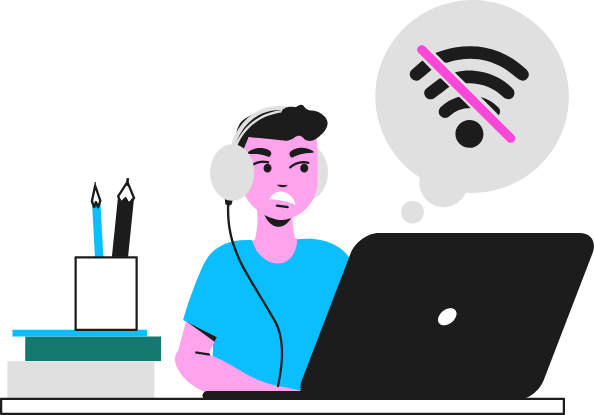From its earliest days in 1991, when the first web site appeared, internet use has seen a meteoric rise. In the early 1990s, fewer than 10 million people used the Internet.


Now, in 2024, the internet is used by 5.35 billion people and they spend hour after hour each day online. Reaching 67.1 % of the world’s population, the internet has become the omnipresent force in our lives. (1)
Internet adoption varies by country and region. Countries in northern Europe have the highest rate of Internet adoption, at 97.4%. China has the largest count of internet users, at 1.05 billion, which represents an adoption rate of 74%. (2)
India has the second highest count of Internet users, at 692 million, but their adoption rate is only 49%. The United States follows with 311 million users, at a rate of 93.7%. (2)
When it comes to regions, almost 1 in 4 users live in East Asia where there is a 74% internet adoption rate. Internet adoption soars above 90% in northern, western and southern Europe, and in North America. The lowest internet adoption rates are seen in eastern (26%), middle (32%) and western (42%) Africa respectively. (1)
Eastern Europe and South America have an adoption percentage above 80%. All regions of Asia rank above 70%, as do South Africa, Central America, Oceana and the Caribbean. (1)
On a global basis, the percentage of the total male population using the internet is 68.8%. For females worldwide, the same percentage is 63.5%. (1)
How much time a person spends online varies by age group. On average, though, internet users will spend 6.5 hours online each day. (3)
Those in the 16 to 24, and 25 to 34 age groups will spend over 7 hours online daily. You may be online for 6 hours if you are 35 to 44, 5.33 hours for ages 45 - 54 and 4.6 hours for those in the 55 - 64 bracket. (3)
It’s also very interesting to look at social media use by age and gender. The biggest gender difference is found in the 16 - 24 age group, where women are on social media for 3.06 hours per day versus men who only log on for an average of 2.6 hours.
Globally, Nigeria wins the social media crown for being online for 3 hours 49 minutes each day. Daily social media use is lowest in Japan, at a mere 49 minutes for the 24 hour period. (4)
If you were on the internet in 1990, there were only 2.6 million others like you. By 2000, the number had ballooned to 396 million. Ten years later, in 2010, after the introduction of the smartphone, the earliest adopters were joined by 1.9 billion other users. (1)
From there, the meteoric rise continued. Internet users doubled between 2010 and 2018, going from 1.912 to 3.808 billion. Now, in 2024, there are 5.35 billion users on the Internet. (1)

On a national level, India has the most people who don’t use the Internet at 683 million, or 47.6% of the population. China and Pakistan come in next at 336 million (23.6%) and 131 million (54.3%) respectively.
If we look at just the percentage of people not connected within a nation, North Korea leads the list at 99.9 plus percent. The African countries of CAR, Burundi, South Sudan, Ethiopia and Burkina Fasso have over 80% of their population without Internet connection. Yemen and Afghanistan have similar numbers. (5)
